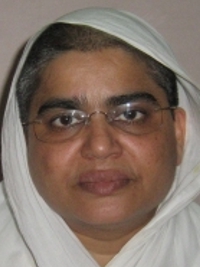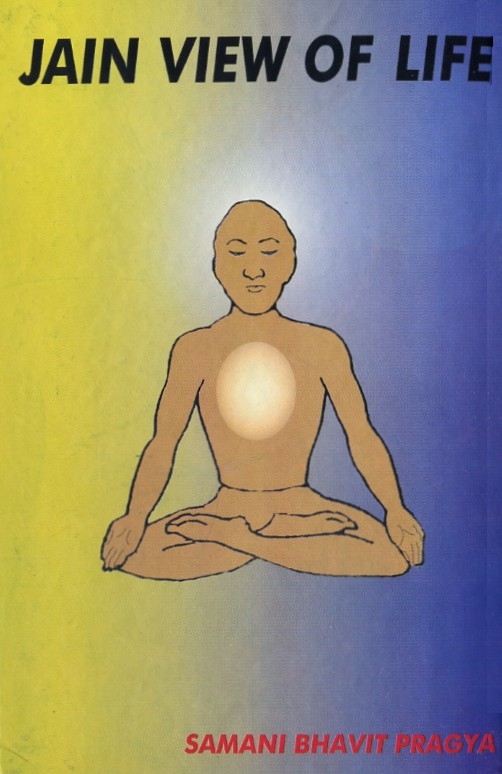The Divine Light of Mantra
A mantra is a collection of mystic sound, radiant energy, and sacred word or words. The literal meaning of mantra is the force which protects a person from the bondage of the phenomenal world. The word mantra is derived from the root man in Sanskrit; the etymology of the word is Mananaat tray ate iti mantra; Man (mananaat refers to meditation on an esoteric formula such as Om, Arham, Mahamantra Namo Arahantanam etc.), Tra {Trayate signifies to protect or free), and iti means thus or through. By combining these syllables, the word mantra is formed.
The King of all Mantras
Mahamantra is an extraordinary mantra which has evolved over the centuries; it is truly the king of all mantras. It contains the essence of Jainism. Each letter inherent in Mahamantra has inconceivable power; each single letter is a mantra in itself. It is a universal mantra which can be employed by anyone who aspires to develop mental, emotional and spiritual personality. One who meditates on it with a pure and stable mind becomes safe from any type of anguish, fear, or misery. It protects like a shield. It subdues mis-influences of the planets and saves the meditator from the worries and hurdles of life. It invokes purity of soul and enhances well-being, happiness, and awareness of life.
The Divine Souls
Within Mahamantra there exists five great souls, namely, Arhats, Siddhas, Acharyas, Upadhyayas, and Sadhus. Arahanta means the destroyer of vitiating karmas -Jnanavarniya (knowledge obscuring), Darshanavarniya (perception obscuring), Mohniya (deluding), and Antaraya (hindrance producing) - after which pure character, infinite potency, perfect knowledge, and perfect perception are manifested in the soul. Siddha (liberated soul) who has destroyed four vitiating karmas and four non-vitiating karmas - Nam (physical structure forming), Gotra (status forming), Vedniya (feeling causing), and Ayushya (life span determining). The eight inherent powers of the Siddha are perfect knowledge, perfect perception, eternal happiness, pure character, infinite potency, formlessness, statuslessness, and eternal life. Acharya is said to be the leader of a sect which conducts a religio-social organization consisting of sadhus and sadhvis, lay-men and women. Upadhyaya (Up means near; Adhyaya means to study) guides others by imparting knowledge of the scriptures. A Sadhu carries five great vows - non-violence, truth, non-stealing, celibacy, and non-possession.
The Proper Way of Mala
First, one must sit in a straight posture keeping the spine and neck erect. The mantras can be observed as mala (rosary), shifting the rosary beads between the thumb and the middle finger of the right hand while keeping the hand near the heart. At the time of recital we are to remember the virtues of the five great souls and feel ourselves to be like them. The awareness of mind is fixed upon the movement of each bead. The mount bead should not be crossed. Start the mala facing east.
The Three Stages of Mantra Repetition
The process of saying a mantra over and over is known as Japa Yoga. Japa means the repetition of a mantra with devotion and faith. There are three stages of mantra repetition - verbal, upansu (whispering), and mental. In the initial stage the mantra is being pronounced verbally aloud with clarity of speech, intonation, and intensity of concentration. If these three requirements occur together in practice, the mantra will tend to work more effectively and it will alter the frame of mind, behaviour, and attitude. Upansu means whispered sound. It consists of continuous silent repetition, but with moving lips. In the mental stage, the mind follows the pronunciation of the mantra, observing the meaning of the letters. The vision is moved through the letter or line that is being repeated, after which, involuntarily and without effort, continuous repetition occurs in the mind. The Japa of Mahamantra should be performed in this manner; first verbally, then whispering, and then mentally.
The Power of the Word
The Mahamantra influences us immensely. We are familiar with the external effects of sounds. During foreign travel, Swami Vivekananda spoke on the great importance of words. A man in the audience told him that it was all unintelligible to him, and said that words were meaningless sounds. The Swami called the man "a fool", and said "Did you not understand such a simple thing?" This irritated the man and he asked the Swami why he had used such abusive language. The Swami replied "It is you who have said that words are meaningless. Why do you feel perplexed? It shows that words contain infinite potentiality; words have power and create effects."
The Impact of Gem, the Sacred Mantra and Medication
Regarding the effect of the mantra, it is said in Sanskrit that Achintyo Manimantrauashadheenam Prabhah. Achintyo means inconsiderable, Mani means gem, Aushadha means medication, and prabhah means impact. This means that the impact of gem, sacred mantra, and medication is beyond thought. Gem helps to remove the mis-influence of the planets upon a person. As an experiment, scientists covered a piece of coral with a silken cloth and put a burning coal on that cloth, but to their surprise, the cloth was not burned. The reason was that the heat of the burning coal was drawn into the gem.
Similarly, medication is effective. An Acharya named Padlipta Suri in Jain tradition used an ointment with a certain mixture of medication on his feet, and was able to fly in the sky. Due to this, he became known as 'Padlipta'. With the use of certain medications, a person can see far off lands and across the wall.
Methodology
With the repetition of the five great lines Om Hrim Namo Arahantanam, Om Hrim Namo Siddhanam, Om Hrim Namo Ayariyanam, Om Hrim Namo Uvajjhayanam, and Om Hrim Namo Loe Savva Sahoonam, at the same time, visualizing a particular colour, a person is able to stimulate and awaken the faculties of different centers of the body or chakras which are associated with particular sound vibrations.
Chant the line Om Hrim Namo Arahantanam while concentrating the mind on the center of knowledge situated at the top of the head and visualizing the white colour of the full moon. This activates a grayish substance in the frontal portion of the brain which strengthens all the tissues connected with knowledge. Deficiency of white colour in the body causes many ailments. By compensating for this deficiency through Namo Arihantanam, one increases resistance to disease and becomes healthy. White rays enhance purity, tranquility, and concentration.
Meditate over the line Om Hrim Namo Siddhanam while visualizing the red colour of the rising sun and with the mind focused on the center of intuition situated between the eye brows. The bright red colour helps in regulating the pituitary gland and its secretion. It is also very helpful for awakening inner energy and developing will power. It opens a third eye through awakening the inner vision and activates the entire structure of the body.
Occupy your conscious mind on the line Om Hrim Namo Ayariyanam while focusing on the center of purity situated in the middle of the throat and while visualizing the golden yellow colour of the sunflower. This center belongs to the moon. The position of the moon influences the mind because the mind and the moon are closely connected. Our body contains the complete solar system; the sun, moon, and planets. The colour yellow gives momentum to our disposition towards good conduct and stimulates the thyroid gland. Physiologists believe that the thyroid gland, located in the throat, controls the emotions and instincts, and it is well known that a scarcity of thyroid secretions hinders the growth and development of the body. The colour yellow also pacifies the feelings, improves the capacity for knowledge, and purifies the mind.
Focus your vision on the line Om Hrim Namo Uvajjhayanam while focusing on the center of bliss situated in the middle of the chest twelve fingers above the navel while visualizing the green colour of the leaves on the trees. This will develop super consciousness, subdue passions (anger, ego, etc.), and will awaken the consciousness of bliss. Real happiness comes through from the inner world.
Chant the line Om Hrim Namo Loe Savva Sahoonam with the mind focused on the center of bio-electricity situated at the navel while visualizing a black or dark blue colour. The colour black blocks the attack of vitiating influences from the outside and, for this reason, judges and attorneys used to wear black robes. It constitutes a shield which obstructs external influences from entering the body.
Visualization of Symbols
In the beginning it is impossible for most people to visualize the symbols such as Arhat, Siddha, etc., but beginners should attempt to visualize them. Gradually, as the intensity of concentration increases, the symbols will begin to take shape. These five centers of the body associated with the five colours are very influential on the human body. The Mahamantra consists of five lines and thirty five letters. Om, Hrim, and Arham are the short form or abbreviations of Mahamantra and the seat of the five benedictions, salutations, or supreme beings.
Obstruent of the ill Effects of Planets
To pacify the ill effects of the planets, chant the following Mahamantra while visualizing the associated colour:
The Moon and Venus - Om Hrim Namo Arahantanam The Sun and Mars - Om Hrim Namo Siddhanam Jupiter - Om Hrim Namo Ayriyanam Mercury - Om Hrim Namo Uvajjhayanam Saturn, Rahu (Dragon's head), Ketu (Dragon's tail) -Om Hrim Namo Loe Sahoonam.
A Marvelous Success
The Mahamantra works in a powerful way if the practitioner identifies himself with the mantra, but no benefits will be obtained from chanting the mantra without properly understanding its implications. The mere mechanical recitation of the mantra will be totally ineffective. The proper utterance of the mantra together with the concentration of the mind calls upon the spiritual force of the soul. The vibrations of this mantra produce electrical currents which provide wonderful results and achieve miraculous success in every field of life.
King Shrenika of Magadha built a new palace, but as soon as the palace was completed, it crumbled to the ground. The astrologer said that it would require the sacrifice of a man having thirty two auspicious signs in order to satisfy the demon (the haunting spirit). It was declared in the city that anyone having the thirty two auspicious symbols who was willing to give himself up to sacrifice would be rewarded with gold equivalent to his body weight. Tempted by the gold, the Lady Bhadra offered to give her son Amarkumar for sacrifice. Queen Chelana pleaded with the King to dissuade him from carrying out the sacrifice, but to no avail. The Queen told Amarkumar about the effectiveness of reciting the Mahamantra while he was being brought to the sacrificial pyre (fire), and he was deeply engrossed in chanting the Mahamantra. A miracle occurred. The pyre subsided, and a throne appeared in the blaze with Amarkumar seated unharmed on the throne.
Conclusion
The Mahamantra was recognized as a great mantra in ancient times as it is today. It is said of the Mahamantra that it has incredible force and destroys all sins. It is foremost in all that is auspicious with regard to physical, mental, emotional, and spiritual matters. It is of great assistance in attaining desired goals.
 Samani Bhavit Pragya
Samani Bhavit Pragya
